Idea by
Simona Ferrari, Metaxia Markaki
https://landscapeinbetween.com/
Call for ideas 2020
Landscape in-between: a river and a backyard
Landscape in-between: a river and a backyard
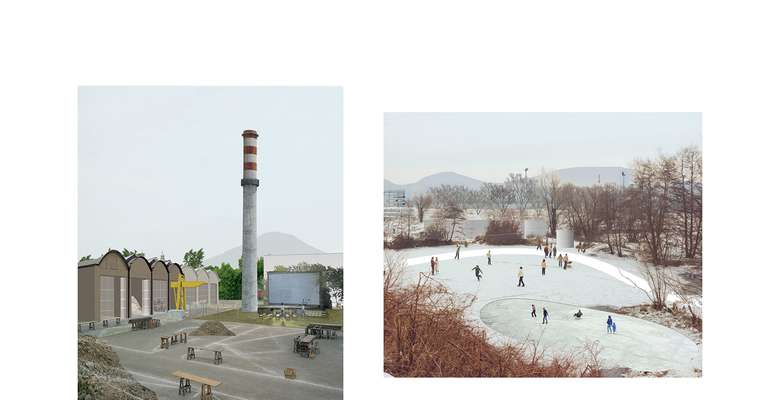
- New alliances
Departing from the metaphor of the backyard, the project sets out to explore the nature of the city of today: its elements, processes, landscapes, territories, and the space in-between. With an attitude of carefully collecting and radically exposing and recomposing materials, flows, historical layers and traces of production engraved on site, our project reflects upon the idea of “reuse” and “production” as a territorial and ecological strategy. Our proposal is a gesture towards a new ecology which accommodates nature and culture, production and everyday life addressing different scales and networks; an ecology that embraces and breads a community of heterogeneous creative actors working on reuse, material design and innovation.
The project is the winning proposal for Europan15, site of Verbania (IT). It carries a series of broader ideas and an underlying statement on how architecture can address emerging complex territories and engage to urgent environmental and economic issues.

Backyard
Once located at a double periphery of two cities, this former industrial site lies today at the heart of a polycentric urban fabric. It is part of a “territorial backyard” of residual spaces, hidden activities and landscape fragments. This condition, typical of contemporary territories becomes our inspiration. Celebrating hidden spaces and revealing processes offers the potential to reconnect discontinuities, empower margins, claim new hierarchies for an emerging territorial city.

Carrying on the Legacy of a Productive Landscape. A Different Ecology
Drawing from the productive history of Verbania’s landscape, an idea emerges: production and its territory has to be conceived as one system of natural and cultural processes, forces, resources and human interventions. Our project builds upon this tradition and the idea of an alternative ecology, where the very notion of landscape, production and process are redefined in a way that one extends and complements the other.
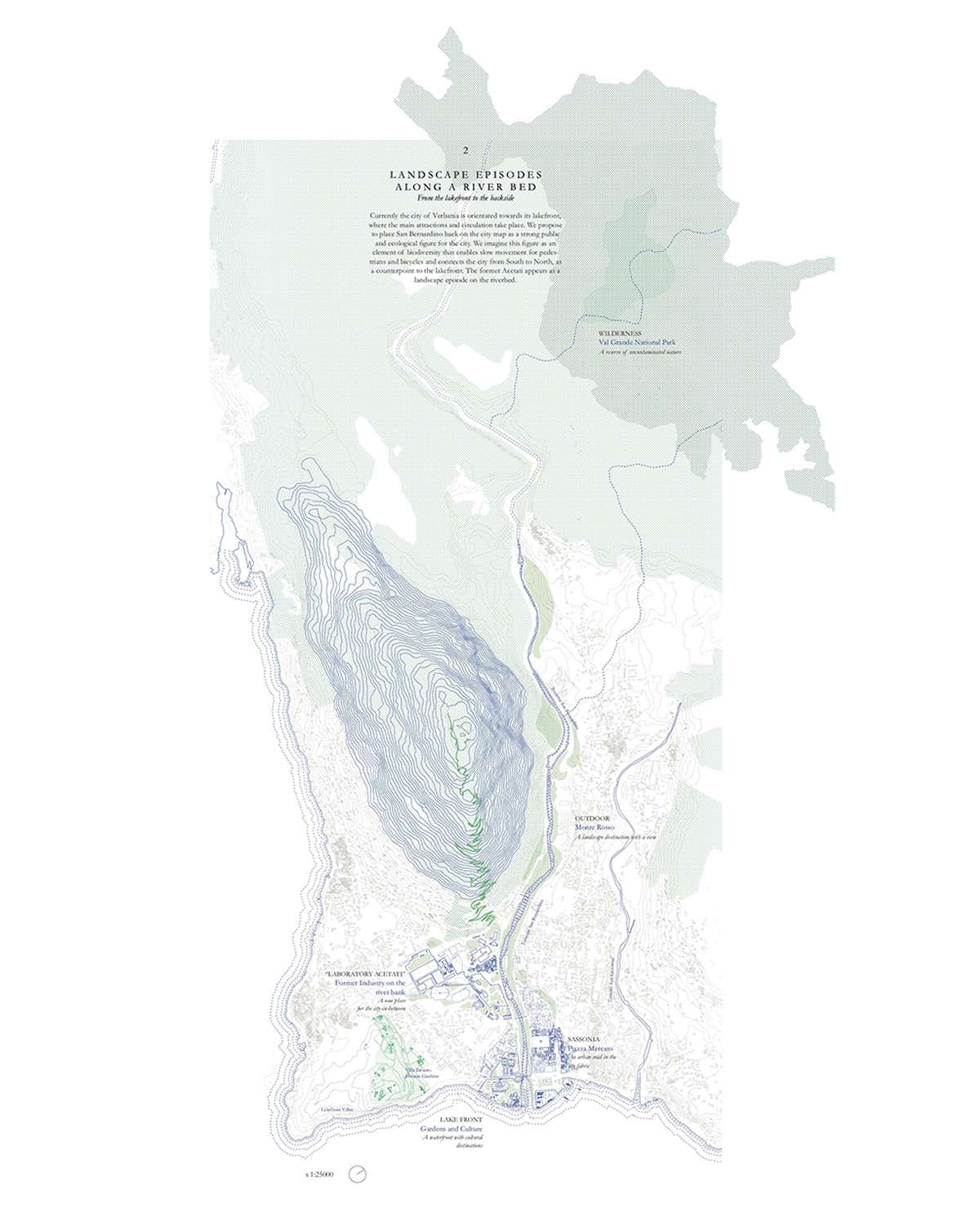
Rediscovery of the River as a Strong Ecological Figure for Verbania
Currently the city is orientated towards its scenic lakefront. We propose to bring back on the map San Bernardino river as a public ecological figure allowing to reconnect the city to its depth. This figure becomes a new public space of a territorial scale for Verbania: an element of biodiversity which allows slow movement for pedestrians and bicycles and a thread along which a sequence of landscape episodes unfolds.
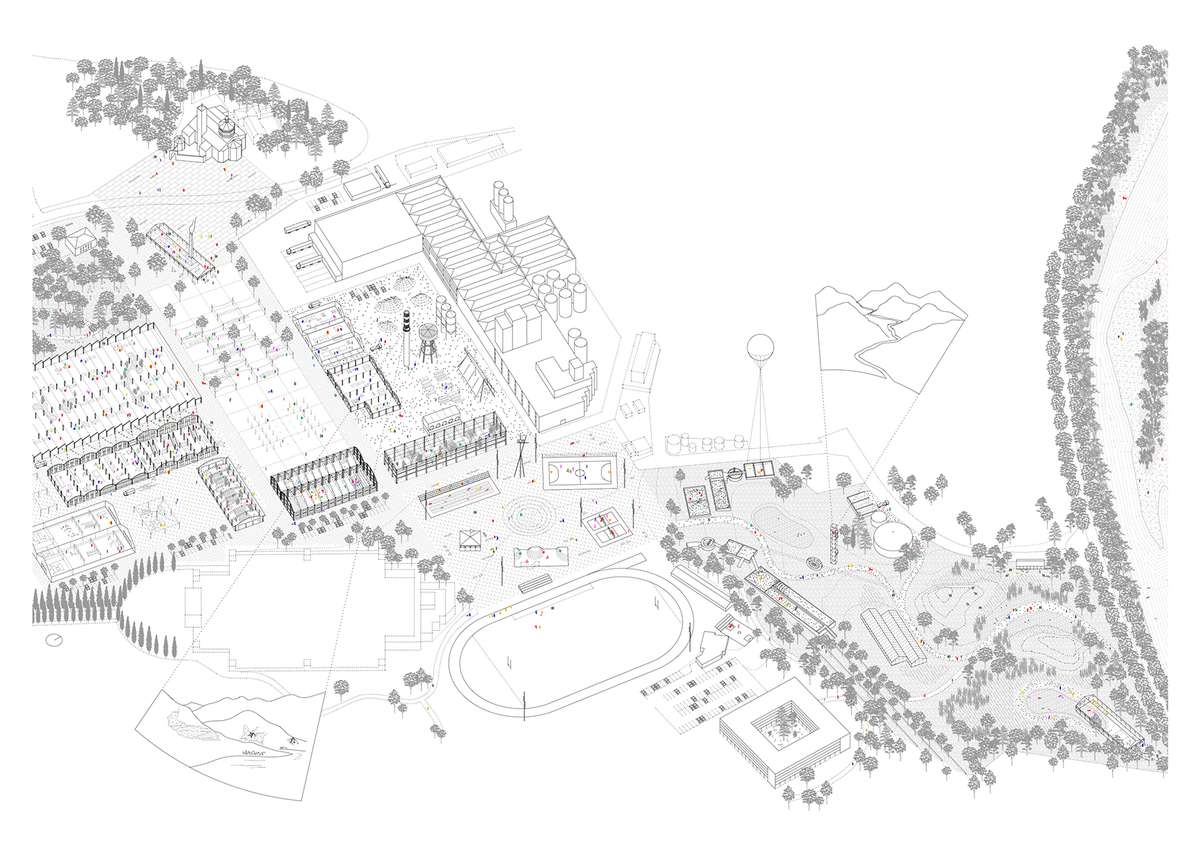
An Infrastructure of Encounters
Before designing the actual space, the project suggests a composition of actors and networks that will inhabit and connect the place to broader networks and economies. Production is conceived as both a material and immaterial process, a social and intellectual act. The site turns into an “infrastructure” which enables encounters and exchange giving rise to eventualities.
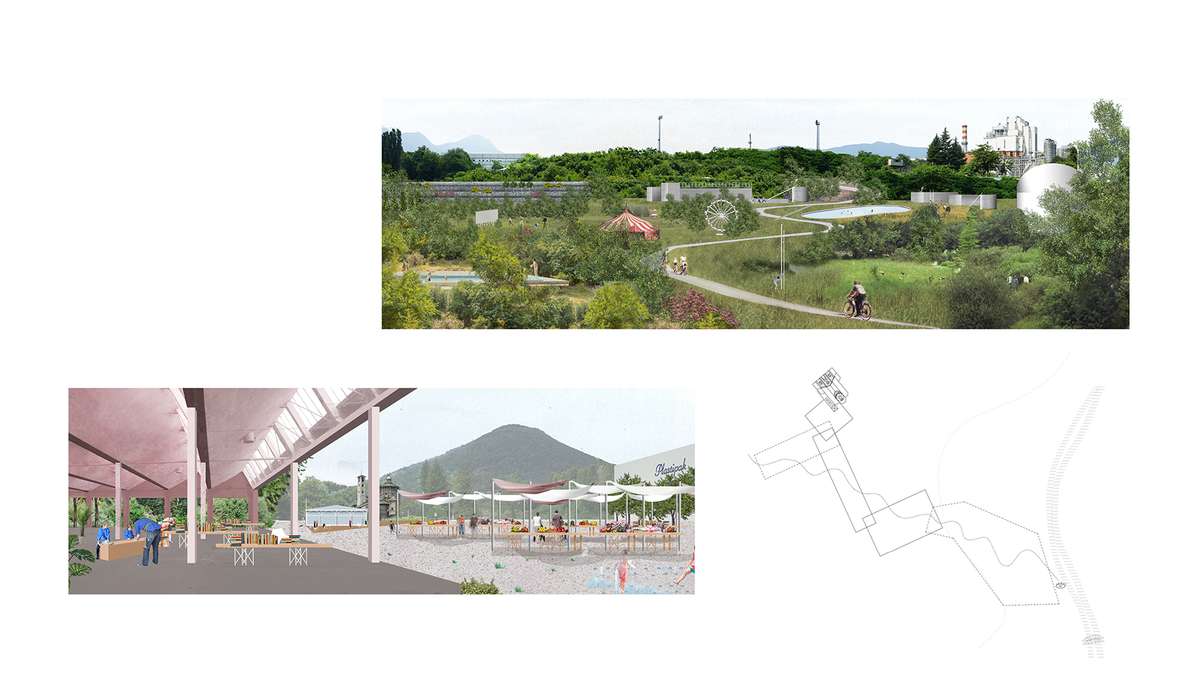
The Public Space of the City In-between is a Promenade
The public space of the city in-between doesn’t look like the piazza of the historical city. It is fluid, dynamic, a place in the making. It is leisure, but also educational. It is local, but also enables a territorial gaze. It is a shared space, a stage for Verbania where relations and experiences are possible. More than a designed articulated space, it is rather a composition of gatherings and eventualities.
Landscape in-between: a river and a backyard
Landscape in-between: a river and a backyard

- New alliances
Departing from the metaphor of the backyard, the project sets out to explore the nature of the city of today: its elements, processes, landscapes, territories, and the space in-between. With an attitude of carefully collecting and radically exposing and recomposing materials, flows, historical layers and traces of production engraved on site, our project reflects upon the idea of “reuse” and “production” as a territorial and ecological strategy. Our proposal is a gesture towards a new ecology which accommodates nature and culture, production and everyday life addressing different scales and networks; an ecology that embraces and breads a community of heterogeneous creative actors working on reuse, material design and innovation.
The project is the winning proposal for Europan15, site of Verbania (IT). It carries a series of broader ideas and an underlying statement on how architecture can address emerging complex territories and engage to urgent environmental and economic issues.
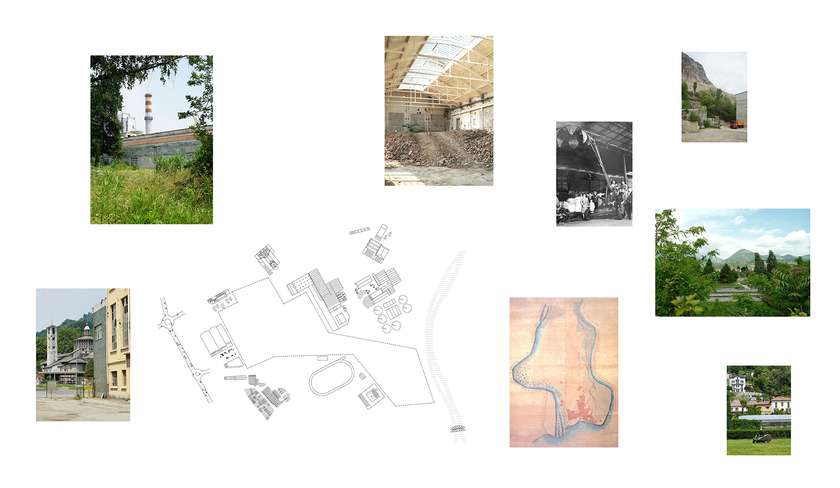
Backyard
Once located at a double periphery of two cities, this former industrial site lies today at the heart of a polycentric urban fabric. It is part of a “territorial backyard” of residual spaces, hidden activities and landscape fragments. This condition, typical of contemporary territories becomes our inspiration. Celebrating hidden spaces and revealing processes offers the potential to reconnect discontinuities, empower margins, claim new hierarchies for an emerging territorial city.

Carrying on the Legacy of a Productive Landscape. A Different Ecology
Drawing from the productive history of Verbania’s landscape, an idea emerges: production and its territory has to be conceived as one system of natural and cultural processes, forces, resources and human interventions. Our project builds upon this tradition and the idea of an alternative ecology, where the very notion of landscape, production and process are redefined in a way that one extends and complements the other.

Rediscovery of the River as a Strong Ecological Figure for Verbania
Currently the city is orientated towards its scenic lakefront. We propose to bring back on the map San Bernardino river as a public ecological figure allowing to reconnect the city to its depth. This figure becomes a new public space of a territorial scale for Verbania: an element of biodiversity which allows slow movement for pedestrians and bicycles and a thread along which a sequence of landscape episodes unfolds.
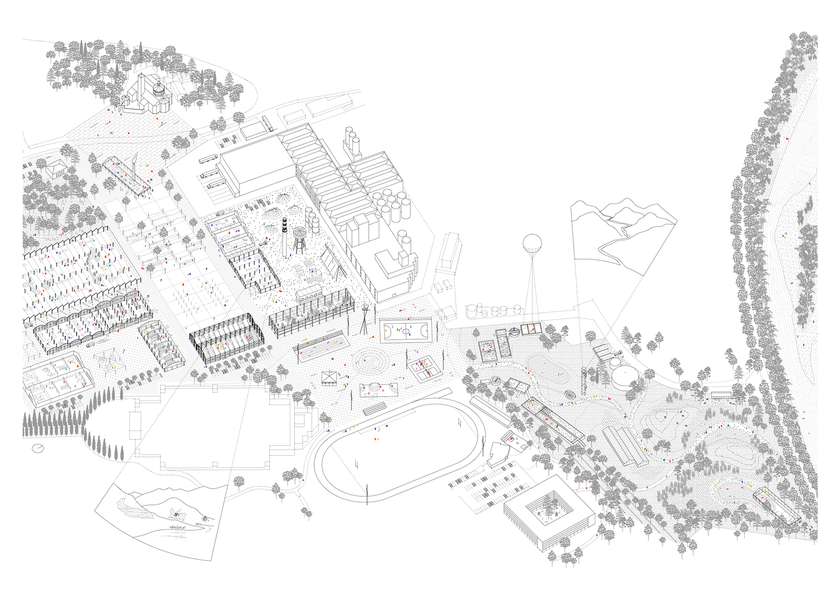
An Infrastructure of Encounters
Before designing the actual space, the project suggests a composition of actors and networks that will inhabit and connect the place to broader networks and economies. Production is conceived as both a material and immaterial process, a social and intellectual act. The site turns into an “infrastructure” which enables encounters and exchange giving rise to eventualities.
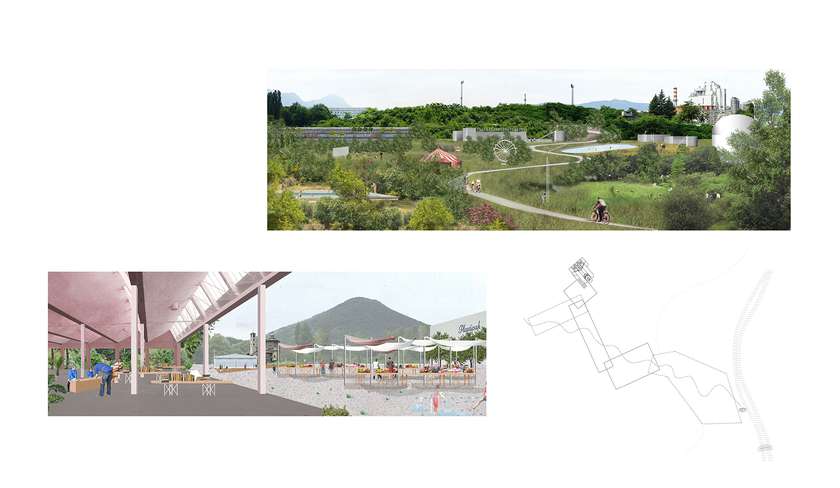
The Public Space of the City In-between is a Promenade
The public space of the city in-between doesn’t look like the piazza of the historical city. It is fluid, dynamic, a place in the making. It is leisure, but also educational. It is local, but also enables a territorial gaze. It is a shared space, a stage for Verbania where relations and experiences are possible. More than a designed articulated space, it is rather a composition of gatherings and eventualities.